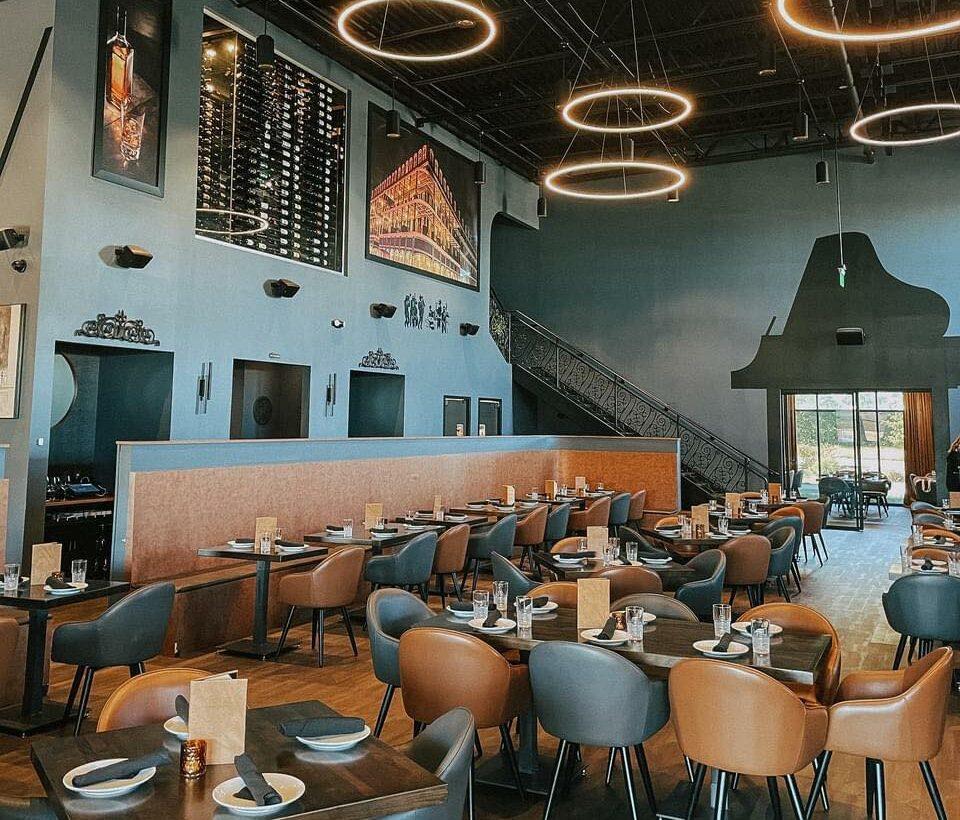Pan Asian Dining Islamabad: Enjoy Authentic Asian Meals
Pan Asian Dining Islamabad: Enjoy Authentic Asian Meals
Blog Article
Savor Genuine Eastern Cuisine With a Pan-Asian Twist for a Culinary Experience
Getting started on a cooking trip through authentic Oriental food, boosted with a Pan-Asian twist, uses an one-of-a-kind possibility to check out the rich tapestry of tastes that define the region's diverse culinary customs. This experience invites you to relish the beautiful balance of tastes-- sweet, salted, spicy, and sour-- integrated by fragrant herbs and spices. Picture the innovative fusion of Thai curry and ramen or the unanticipated joy of sushi burritos. As you contemplate these luring meals, consider the social stories and historical influences that shape them, each bite supplying a tale waiting to be found.

Discovering Pan-Asian Flavors
In the world of international gastronomy, Pan-Asian food attracts attention for its amazing diversity and the harmonious interplay of tastes from various Oriental societies. This cooking technique celebrates the special active ingredients and rich practices found across the continent, developing a tapestry of tastes that is both fascinating and rewarding. Trick to Pan-Asian cuisine is its capacity to stabilize contrasting tastes-- sweet, salty, spicy, and sour-- while highlighting the quality and top quality of each active ingredient.
From the umami-rich soy sauce of Japan to the intense chili peppers of Thailand, Pan-Asian cuisine uses a substantial combination of tastes. These aspects are often incorporated in creative ways, improving meals with layers of intricacy. For circumstances, making use of great smelling herbs such as lemongrass and cilantro, typical in Vietnamese and Thai food, includes a revitalizing illumination to recipes, while the unification of coconut milk delivers a creamy, rich texture.
The focus on fresh fruit and vegetables and fragrant flavors guarantees that each dish is not only a feast for the palate however likewise for the senses. Pan-Asian cuisine invites diners to start a culinary trip, discovering the substantial and differed landscapes of Oriental gastronomy with every bite.
Combination Meals to Try
While Pan-Asian cuisine is celebrated for its typical flavors, the modern-day culinary landscape is significantly accepting blend meals that mix these classic components with influences from other regions. This ingenious approach not just honors the rich heritage of Oriental cookeries but additionally introduces novel preference experiences that appeal to modern tastes.
A prime example of such a blend dish is the Korean-Mexican taco, where seasoned bulgogi beef is wrapped in a warm tortilla, covered with kimchi and a spicy gochujang-infused salsa. This combination marries the vibrant, tasty tastes of Korea with the dynamic, fresh aspects of Mexican food. Similarly, sushi burritos have gotten appeal, amalgamating the delicate creativity of Japanese sushi with the passionate, hand-held convenience of a burrito, typically featuring blend ingredients like tempura shrimp and avocado with a drizzle of wasabi mayo.
Another significant dish is Thai curry ramen, which instills the luscious, fragrant seasonings of Thai curry into the soothing brew of traditional Japanese ramen, creating a harmonious blend that tantalizes the senses. These combination meals prolong past simple uniqueness; they stand for a cooking discussion in between societies, urging expedition and advancement worldwide of Pan-Asian food.
Essential Ingredients and Spices
To really appreciate Pan-Asian food, one have to understand the important components and flavors that develop its foundation. This varied cooking style attracts from an abundant tapestry of Eastern traditions, employing an unified blend of flavors and appearances. Trick active ingredients consist of soy sauce, fish sauce, and oyster sauce, which present a savory umami deepness vital to Eastern meals. Complementary to these are rice vinegar and mirin, lending a delicate level of acidity and sweetness.
Aromatic components are essential, with garlic, lemongrass, and ginger being common across various Pan-Asian dishes. These ingredients offer a great smelling base that improves the intricacy of tastes. Flavors such as star anise, cardamom, and cinnamon present warmth and personality, echoing impacts from regions like China and India.

Cooking Methods and Tips
Grasping the art of Pan-Asian food calls for familiarity with its distinctive cooking methods, each adding to the vivid tapestry of browse around here tastes this cooking tradition is celebrated for. Central to these methods is the stir-fry, a fast cooking method that protects the nutritional stability and brilliant shades of active ingredients. Utilizing a wok, the stir-fry technique permits also warmth circulation, important for accomplishing the characteristic structure and taste equilibrium of Pan-Asian recipes.
An additional basic method is steaming, particularly common in Chinese food. This mild technique keeps the all-natural tastes and nutrients of active ingredients, making it suitable for fish and shellfish and vegetables. Dumplings, a cherished staple, typically benefit from steaming, resulting in soft, succulent appearances.
Barbecuing, likewise essential, imparts great smoky midsts to meals such as Korean bulgogi or Japanese yakitori (best asian restaurant Islamabad). This technique often entails marinading active ingredients, allowing tastes to pass through deeply before food preparation over an open flame or warm plate
Finally, mastering the art of stabilizing flavors-- pleasant, sour, salty, bitter, and umami-- is essential. Properly layering these components can elevate a recipe from common to extraordinary, supplying a complicated and pleasing their explanation culinary experience that personifies the essence of Pan-Asian food.
Dining Experiences Worldwide
Around the world, Pan-Asian cuisine offers an exceptional eating experience, celebrated for its abundant tapestry of flavors and lively presentations. This cooking phenomenon has transcended social boundaries, recording the hearts and palates of food fanatics worldwide. In cosmopolitan cities fresh York, London, and Sydney, Pan-Asian restaurants act as melting pots where cooking practices from Thailand, Japan, China, and past merge, offering diners with an eclectic mix of recipes that highlight the area's variety.
The international appeal of Pan-Asian cuisine hinges on its capability to use both credibility and innovation. Chefs skillfully marry conventional components such as lemongrass, soy sauce, and miso with modern methods, leading to meals that are both familiar and refreshingly new. This combination enables diners to begin on a culinary trip that respects heritage while accepting modernity.
In addition, eating experiences are boosted with attentively created atmospheres that show the values of Pan-Asian visual appeals. From minimalist Japanese-inspired insides to vivid Thai-themed rooms, each dining establishment provides a distinct ambiance that complements the cooking offerings. As an outcome, customers are not simply consuming a dish yet partaking in a cultural experience, making Pan-Asian dining a truly global sensation.
Final Thought
The exploration of Pan-Asian cuisine provides a profound understanding view website of the intricate interplay of tastes and culinary customs across Asia. By accepting combination recipes such as Thai curry ramen and sushi burritos, the culinary journey not just highlights the flexibility of typical components but additionally showcases ingenious modern strategies. This gastronomic experience, enriched by cooking methods and crucial flavors, provides an unique chance to appreciate the multiculturalism and culinary virtuosity that define Pan-Asian cuisine on a worldwide scale.
Getting started on a culinary trip through authentic Eastern cuisine, boosted with a Pan-Asian twist, supplies a distinct chance to discover the abundant tapestry of tastes that specify the region's diverse culinary practices.In the realm of international gastronomy, Pan-Asian cuisine stands out for its exceptional diversity and the harmonious interaction of tastes from various Oriental societies. Key to Pan-Asian food is its capacity to balance contrasting tastes-- pleasant, salty, spicy, and sour-- while highlighting the freshness and top quality of each ingredient.

Report this page